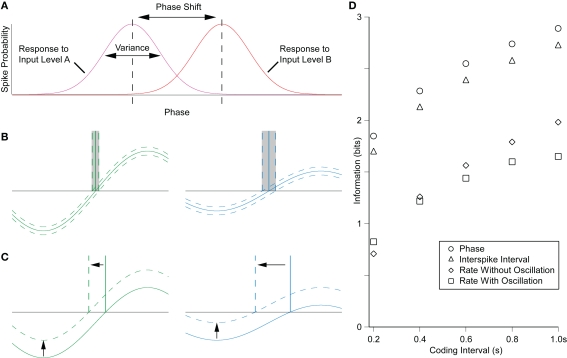Figure 3.
The precision of the rate-to-phase transform can be quantified by the mutual information between the tonic input level and the phase of firing. (A) For the rate-to-phase transform, mutual information increases with two main factors: (i) decreasing the variance in response phase for a given level of tonic input, and (ii) increasing the shift in phase for a given change in the level of tonic input, that is, the slope of the ɸ–I curve. These factors are both strongly influenced by oscillation amplitude, as follows. (B) The gradient of the membrane potential on approach to threshold influences the susceptibility to noise. For a fixed amplitude of membrane potential noise (dotted lines around the membrane potential trace), increasing oscillation amplitude will decrease response phase variance, increasing mutual information. (C) For precisely the same underlying reasons, increasing the oscillation amplitude will decrease the phase-shift for a given change in tonic input, decreasing the mutual information. (D) The efficiency of the rate-to-phase transform was estimated in hippocampal pyramidal cells in vitro, for a physiologically relevant amplitude (5 mV) of theta-frequency (5 Hz) oscillation. Mutual information was significantly higher for the phase of firing than for the rate of firing, and similar to that for the interspike interval where no oscillation was present (McLelland and Paulsen, 2009).

